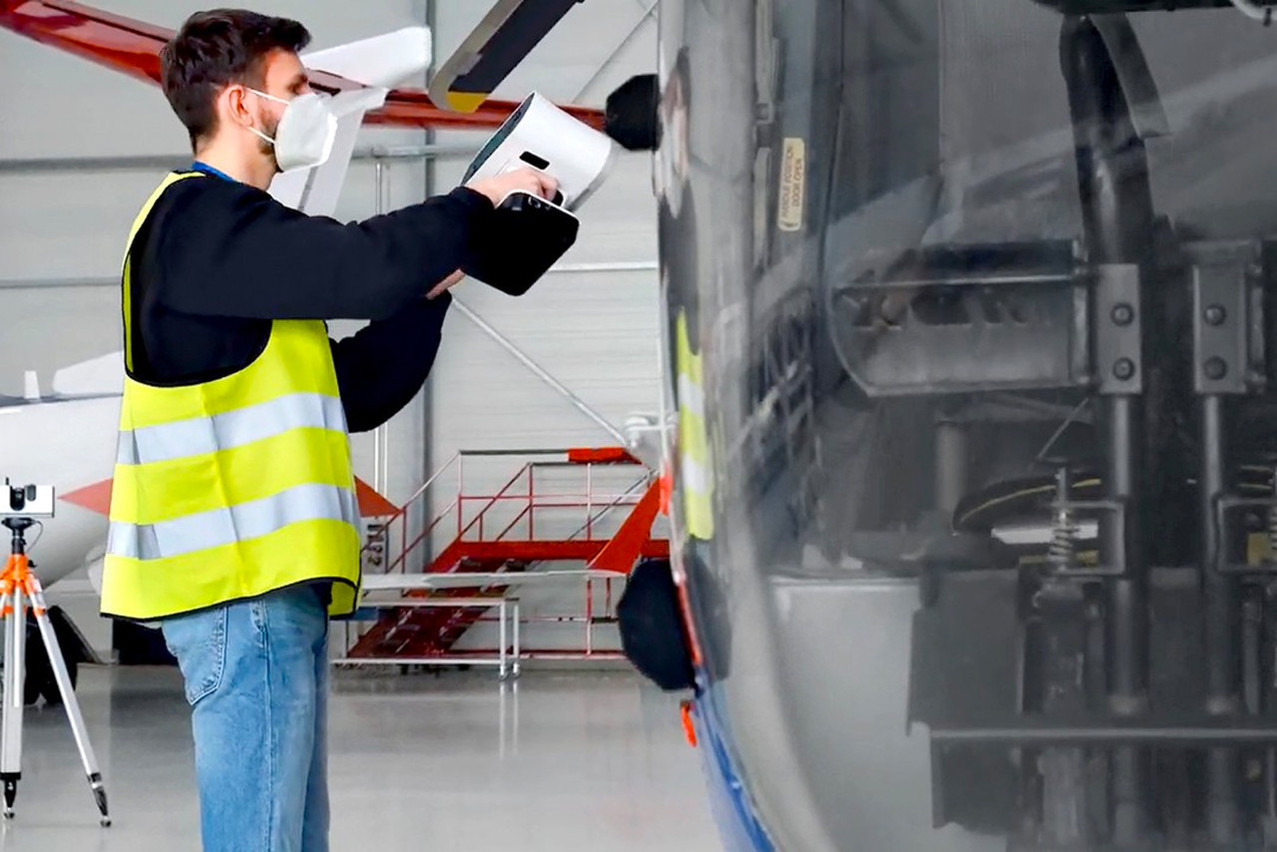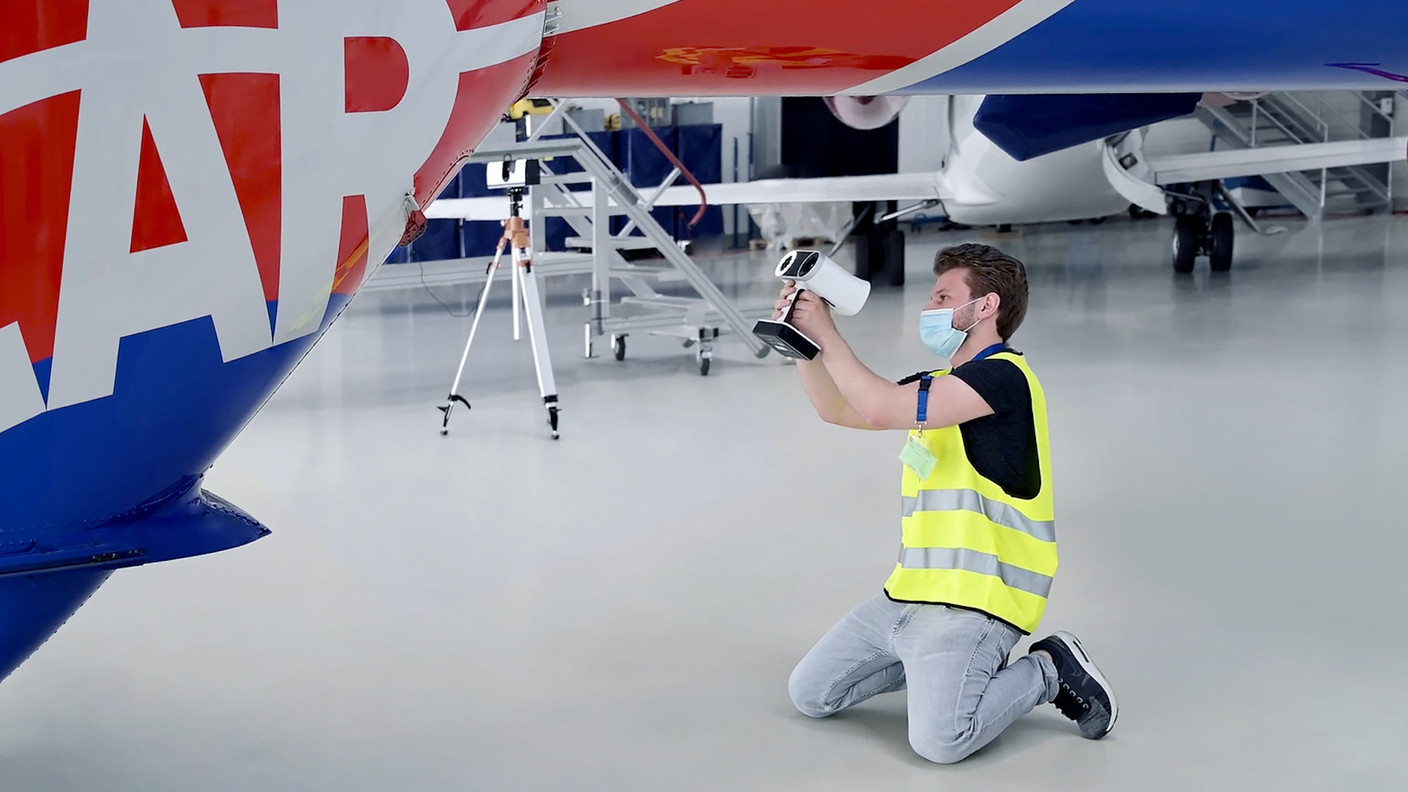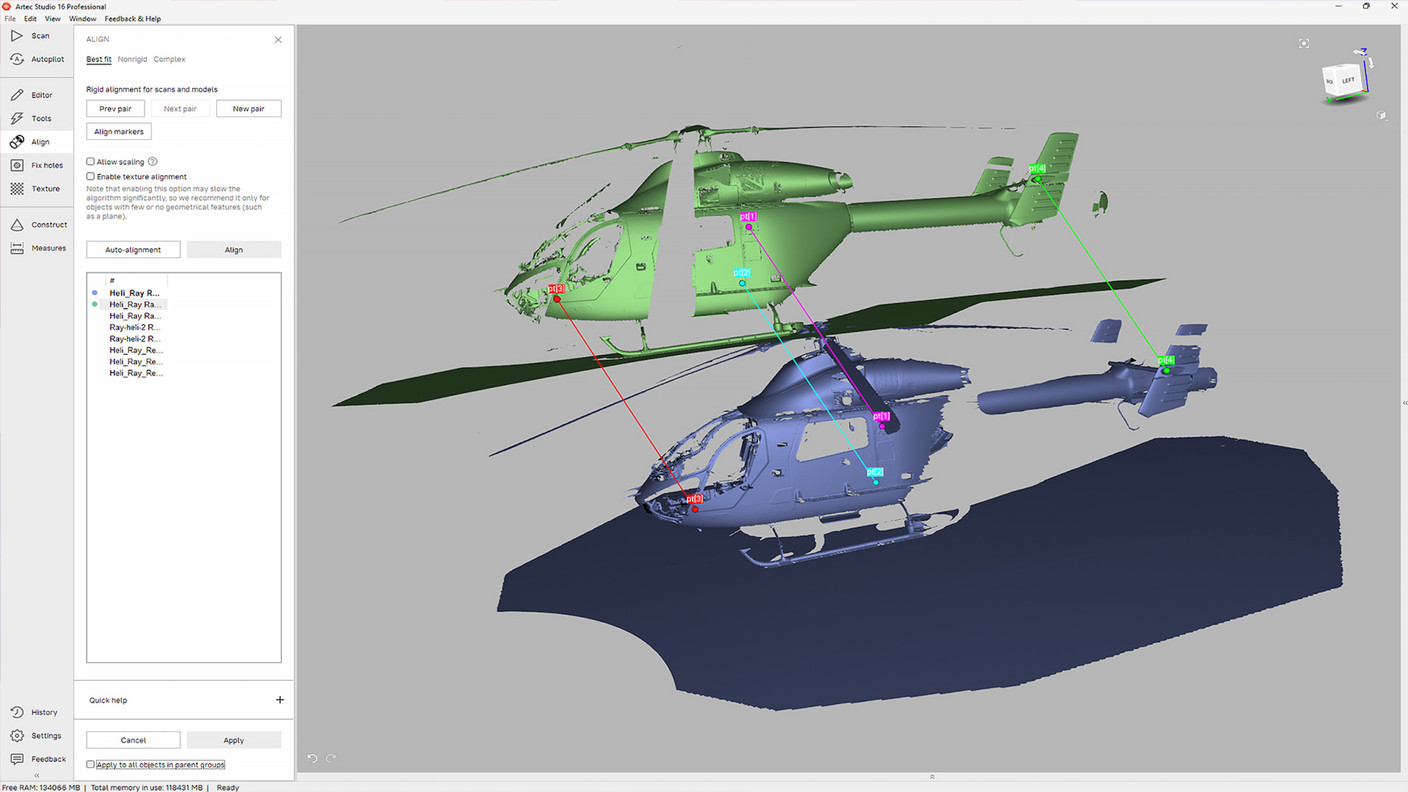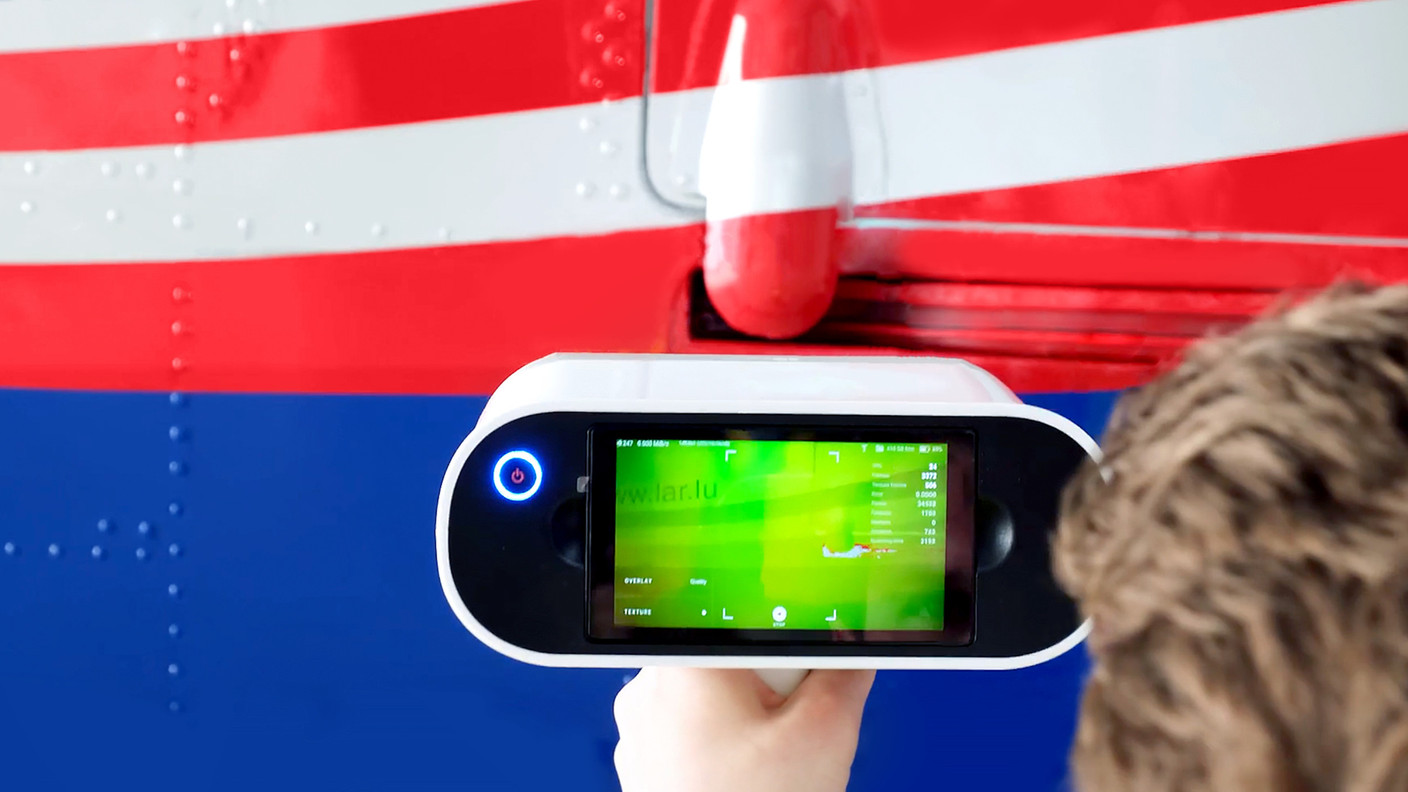With 30,000 missions, Luxembourg Air Rescue has always made a good impression. It seemed obvious that the six McDonnell-Douglas MD-902 helicopters would also make a good impression in 3D. It took “only” 11 hours for two Artec 3D scanners, the Leo and the Ray, to take all the measurements of 'the beast'.
After completing 16 shots, eight from the top and eight from the bottom, in less than three hours, 26 millimetre-accurate shots of the aircraft took another eight hours. The two experts sent to the LAR hangar also used a special spray to make their scans more accurate, except for the windows, which had to be studied on another helicopter and adapted. Taking images under the belly of the aircraft, often with in a space that measured less than 35 centimetres, was something of a challenge. The same goes for the helicopter's blades, which were captured using LAR's mobile elevator platform.
All these images were then processed in the Artec studio over a two-week period to obtain a digitised, 3D version of the aircraft.
Far from being trivial, this astonishing move by two Luxembourg players is a reminder of the challenges and opportunities for 3D printing in the aeronautical sector: precise measurements, improving the design of the interior or maintenance of the exterior, replacing parts with additive printing, simulating aerodynamic performance, and accelerating the development of new designs.
€80 million campus in Europe
On October 10, French aeronautical firm Safran inaugurated a 12,500m2 campus where 100 additive manufacturing experts will work. The €80 million investment should enable the aerospace giant (turnover €24 billion) to increase its production of 3D printed parts from more than 1,000 to date to 4,000 components this year and more than 8,000 next year.
But that is a slow catch-up with what is being done on the other side of the Atlantic. In 2020, the US Air Force extended the use of additive manufacturing to its B2 stealth bombers, in order to reduce the staggering cost ($122,000 per hour of use). Last year, using a digital platform from , Boeing, EOS, BEAMIT and 3 T Additive Manufacturing established a fully controlled distributed 3D printing network across the continents.
Earlier this year, Velo3D announced that one of the world's leading aerospace manufacturers, Lockheed Martin Space, had acquired its Sapphire XC printer, which is used at Lockheed's in Sunnyvale, California, to print parts up to 60cm in diameter and 50cm in height.
According to the latest study by Allied Market Research, additive manufacturing is expected to reach $107.7 billion by 2031 across all industries.
This article is part of the Paperjam Tech weekly newsletter, the place to be for news on innovation and new technologies. You can subscribe to it






